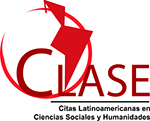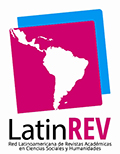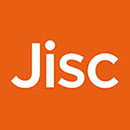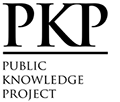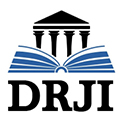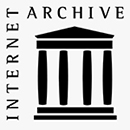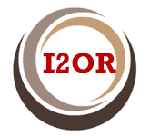Desinformação e direitos autorais: uma difícil convivencia
Resumo
Como é sabido, as novas tecnologias mudaram fundamentalmente a forma como o conteúdo é produzido, compartilhado e distribuído. Uma das mudanças mais recentes (e preocupantes) é o fenômeno das “notícias falsas”, especialmente porque a desinformação e a deturpação deliberada de informações genuínas começaram a influenciar a tomada de decisão individual na esfera política. É um fenômeno preocupante porque a disseminação de notícias falsas pode colocar em risco os valores democráticos e minar a segurança nacional.
Nesse contexto, vale a pena perguntar se a lei de direitos autorais pode desempenhar um papel na luta contra as notícias falsas. E o mais importante, qual é a relação entre essas notícias e a lei de direitos autorais?
Em teoria, o fake news se enquadra no escopo da proteção de direitos autorais e muitas vezes pode atender aos seus requisitos de proteção. Este artigo analisa três histórias recentes do fake news que se espalharam pela internet e demonstra que tais notícias podem ser protegidas por direitos autorais. O primeiro exemplo é um pequeno artigo, enquanto os outros dois exemplos se referem a uma fotografia alterada digitalmente e a um vídeo. Embora [essas mensagens] sejam potencialmente protegidas por direitos autorais, sugerimos que quaisquer direitos dessa natureza que possam surgir sejam removidos, por motivos de interesse público. Isso porque, quando uma obra goza de proteção de direitos autorais, seus proprietários têm um incentivo para explorá-la, pois o monopólio que lhes é concedido permite o aproveitamento da obra, por exemplo, por meio de licenciamento. Isso pode encorajar os criadores do fake news a divulgá-lo exponencialmente por meio de vários canais para atingir um grande público. A exclusão de direitos autorais pode, portanto, tornar as Notícias Falsas menos atraentes. O artigo também discute resumidamente as defesas de direitos autorais que entidades e indivíduos que verificam a verdade das notícias (verificadores de fatos) podem afirmar, nomeadamente a doutrina do uso justo ao abrigo da lei dos EUA e várias exceções disponíveis ao abrigo da lei da UE (e do Reino Unido), nomeadamente o uso transitório , extração de dados e texto, exceção de crítica e revisão e segurança pública.
Downloads
Referências
Al-Ash, H. S. y Wibowo, W. C. (2018). Fake News Identification Characteristics Using Named Entity Recognition and Phrase Detection. 10th International Conference on Information Technology and Electrical Engineering (ICITEE). pp. 12-17
Alemanno, A. (2018). How to Counter Fake News? A Taxonomy of Anti-fake News Approaches. European Journal of Risk Regulation, 9(01), 1-5.
Allcott, H. y Gentzkow, M. (2017). Social Media and Fake News in the 2016 Election. Journal of Economic Perspectives, 31(2), 211-236.
Alvi, R (2020). Dolphins Return To Venice Canal As Pollution Drops Amid Lockdown. Gonewsindia. https://www.gonewsindia.com/latest-videos/international/swans-dolphins-return-to-venice-canal-as-pollution-drops-amid-lockdown-10772.
Balganesh, S. (2011). “Hot News”: The Enduring Myth of Property in NewsColumbia. Law Review, (111), 419-497.
Bartlett, E. (16 de julio de 2020). No, Saudi State Television Did Not Blur out Angela Merkel’s Hair. Inews.co.uk. https://inews.co.uk/news/world/angela-merkel-hair-saudi-arabia-6306.
Bently, L. (2016). Response to Article 11 of the Proposal for a Directive on Copyright in the Digital Single Market: Modernising the European Copyright Framework. https://www.cipil.law.cam.ac.uk/sites/www.law.cam.ac.uk/files/images/www.cipil.law.cam.ac.uk/documents/ipomodernisingipprofresponsepresspublishers.pdf.
Bently, L., Sherman, B., Gangjee, D. y Johnson, P. (2018). Intellectual property law. Oxford University Press.
Bonadio, E. (2019). The Cambridge Handbook of Copyright in Street Art and Graffiti (Cambridge Law Handbooks). Cambridge University Press.
Bonadio, E. y Lucchi, N. (2018a). Copyright and Pornography. En Bonadio, E. y Lucchi, N. (Eds.), Non-conventional copyright: do new and atypical works deserve protection? (pp. 418-431). Edward Elgar Publishing.
Bonadio, E. y Lucchi, N. (2018b). Non-conventional copyright: do new and atypical works deserve protection? Edward Elgar Publishing.
Boyle, J. (2008). The public domain : enclosing the commons of the mind. Yale University Press.
Braun, J. A. y Eklund, J. L. (2019). Fake News, Real Money: Ad Tech Platforms, Profit-Driven Hoaxes, and the Business of Journalism. Digital Journalism, 7(1), 1-21.
Cao, J., Qi, P., Sheng, Q., Yang, T., Guo, J. y Li, J. (2020). Exploring the Role of Visual Content in Fake News Detection. En Shu, K., Wang, S., Lee, D. y Liu, H. (Eds.), Disinformation, misinformation, and fake news in social media: emerging research challenges and opportunities. Springer.
Castells, M. (2010). The Power of Identity (2a ed.). Wiley-Blackwell.
Chen, Y., Rubin, V. L. y Conroy, N. (2015). Towards News Verification: Deception Detection Methods for News Discourse. HICSS2015. https://ir.lib.uwo.ca/fimspres/46
Chiou, L. y Tucker, C. E. (2018). Fake News and Advertising on Social Media: A Study of the Anti-Vaccination Movement. SSRN Electronic Journal.
Christian, B. (2020). Dolphins and Swans Appear in Venice Canals a Week after City Locks Down to Prevent Coronavirus Spread. MSN News. https://www.msn.com/en-nz/news/coronavirus/dolphins-and-swans-appear-in-venice-canals-a-week-after-city-locks-down-to-prevent-coronavirus-spread/ar-BB11oWGo?li=BBqdg4K.
Cómo funciona el programa de verificación de datos independiente de Facebook. (1 de junio de 2021). Meta Journalism Project. https://www.facebook.com/journalismproject/programs/third-party-fact-checking/how-it-works.
Conroy, N. J., Rubin, V. L. y Chen, Y. (2015). Automatic deception detection: Methods for finding fake news. Proceedings of the Association for Information Science and Technology, 52(1), 1-4.
Copyright Alliance (2017). Is Fake News Protected By Copyright. https://copyrightalliance.org/education/qa-headlines/is-fake-news-protected-by-copyright/.
Couch, C. J. (1990). Mass communications and state structures. The Social Science Journal, 27(2), 111-128.
Daly, N. (20 de marzo de 2020). Bogus stories of wild animals flourishing in quarantined cities gives false hope—and viral fame. National Geographic. https://www.nationalgeographic.co.uk/animals/2020/03/fake-animal-news-abounds-social-media-coronavirus-upends-life.
Digital Shadows (2017). The Business of Disinformation: A Taxonomy. http://info.digitalshadows.com/rs/457-XEY-671/images/DigitalShadows-TheBusinessofDisinformationFakeNews.pdf.
European Commission (2018). A multi-dimensional approach to disinformation. Report of the independent High Level Group on fake news and online disinformation. https://op.europa.eu/en/publication-detail/-/publication/6ef4df8b-4cea-11e8-be1d-01aa75ed71a1.
European Commission & High Representative of the Union for Foreign Affairs and Security Policy. (2018). Joint Communication to the European Parliament, the European Council, the Council, the European Economic and Social Committee and the Committee of the Regions Action Plan against Disinformation. Brussels, 5.12.2018 JOIN(2018). 36 final.
Figueira, L. y Oliveira, L. (2017). The current state of fake news: challenges and opportunities. Procedia Computer Science, 121, 817-825.
Flauss, J. F. (2009). The European Court of Human Rights and the freedom of expression. Indiana Law Journal, (84), 809-849.
Gillespie, T. (2020). Platforms Throw Content Moderation at Every Problem. En Zimdars, M. y McLeod, K. (Eds), Fake News: Mis/Disinformation in a Digital Age (pp. 329-339). MIT Press.
Graves, L. (2018). Understanding the Promise and Limits of Automated Fact-Checking. https://agency.reuters.com/content/dam/openweb/documents/pdf/news-agency/report/reuters-institute-graves-factsheet-180228.pdf.
Gu, L., Kropotov, V., Yarochkin, F., Leopando, J. y Estialbo, J. (2017). Fake News and Cyber Propaganda: The Use and Abuse of Social Media. Trendmicro. https://www.trendmicro.com/vinfo/us/security/news/cybercrime-and-digital-threats/fake-news-cyber-propaganda-the-abuse-of-social-media.
Gulzar, F. (19 de marzo de 2020). Italy: Dolphins return to Venice's canals as public under coronavirus lockdown. Gulf News. https://gulfnews.com/world/europe/italy-dolphins-return-to-venices-canals-as-public-under-coronavirus-lockdown-1.1584624481080.
Haber, E. (2018). Copyright Protection of Illegal Works. En Bonadio, E. y Lucchi, N. (Eds.), Non-conventional copyright: do new and atypical workers deserve protection? (pp. 401-417). Edward Elgar Publishing.
Haenschen, K. y Ellenbogen, P. (14 de diciembre de 2016). Disrupting The Business Model of the Fake News Industry. Freedom to Tinker. https://freedom-to-tinker.com/2016/12/14/disrupting-the-business-model-of-the-fake-news-industry/.
Holroyd, M. (7 de septiembre de 2020). Debunked: Video does NOT show dolphins in Venice’s canals. Euronews. https://www.euronews.com/2020/03/20/debunked-video-does-not-show-dolphins-in-venice-s-canals-thecube
House of Commons. (2018). Disinformation and “fake news”: Interim Report. Fifth Report of Session 2017-19. Report, together with formal minutes relating to the report. https://publications.parliament.uk/pa/cm201719/cmselect/cmcumeds/363/363.pdf.
Humphrey, J. (2017). The Plague of Fake News and the Intersection with Trademark Law. Cybaris An Intellectual Property Law Review, (8), 127-154.
Karadzhov, G. (1 de octubre de 2017). Fully Automated Fact Checking Using External Sources. ArXiv.Org. https://arxiv.org/abs/1710.00341.
Karapapa, S. (2018). The Press Publishers’ Right in the European Union: An Overreaching Proposal and the Future of News Online. En Bonadio, E. y Lucchi, N. (Eds.), Non-conventional copyright: do new and atypical works deserve protection? (pp. 316–339). Edward Elgar Publishing.
Kertysova, K. (2019). Artificial Intelligence and Disinformation. Security and Human Rights, 29(1-4), 55-81.
Kshetri, N. y Voas, J. (2017). The Economics of “Fake News.” IT Professional, 19(6), 8-12. https://doi.org/10.1109/mitp.2017.4241459.
Laddie, Prescott y Vitoria. (2018). The modern law of copyright. Lexisnexis.
Lavi, M. (2017). Taking Out of Context. Harvard Journal of Law and Technology, (31), 146-190.
Lewis, T. (2020). Nine COVID-19 Myths That Just Won’t Go Away. Scientific American. https://www.scientificamerican.com/article/nine-covid-19-myths-that-just-wont-go-away.
Lim, D. (2019). AI & IP: Innovation & Creativity in an Age of Accelerated Change. Akron Law Review, (52), 814-872.
Mallonee, L. (12 de diciembre de 2016). How Photos Fuel the Spread of Fake News. Wired. https://www.wired.com/2016/12/photos-fuel-spread-fake-news/.
Ohlheiser, A. (18 de noviembre de 2016). This is how Facebook’s fake-news writers make money. Washington Post. https://www.washingtonpost.com/news/the-intersect/wp/2016/11/18/this-is-how-the-internets-fake-news-writers-make-money/.
Pickard, V. (2020). Confronting the Misinformation Society: Facebook’s “Fake News” is a Symptom of Unaccountable Monopoly Power. En McLeod, K. y Zimdars, M. (Eds.), Fake News: Understanding Media and Misinformation inthe Digital Age (pp. 123-132). The MIT Press.
Ping-Hsun, C. (2014). Choice of law—An Unresolved Question in the First Adult Video Copyright Case of the Taiwan Intellectual Property Court, NTUT. Journal of Intellectual Property Law & Management, 3(1), 56-71.
Pitruzzella, G. y Pollicino, O. (2020). Disinformation and Hate Speech: A European Constitutional Perspective. EGEA Spa - Bocconi University Press.
Rahmatian, A. (2013). Originality in UK Copyright Law: The Old “Skill and Labour” Doctrine Under Pressure. International Review of Intellectual Property and Competition Law, 44(1), 4-34.
Reddy, H., Raj, N., Gala, M. y Basava, A. (2020). Text-mining-based Fake News Detection Using Ensemble Methods. International Journal of Automation and Computing, (17), 210-221.
Rosati, E. (2019). Copyright as an obstacle or an enabler? A European perspective on text and data mining and its role in the development of AI creativity. Asia Pacific Law Review, 27(2), 198-217.
Sanders, A. K. y Jones, R. L. (2018). Clicks at Any Cost: Why Regulation Won’t Upend the Economics of Fake News. Business, Entrepreneurship & Tax Law Review, 2(2), 339-358.
Schulte, S. R. (2020). Fixing Fake News: Self-Regulation and Technological Solutionism. En McLeod, K. y Zimdars, M. (Eds.), Fake News: Understanding Media and Misinformation inthe Digital Age (pp. 133-144). The MIT Press.
Scott, M (27 de marzo de 2018). Cambridge Analytica helped “cheat” Brexit vote and US election, claims whistleblower. POLITICO. https://www.politico.eu/article/cambridge-analytica-chris-wylie-brexit-trump-britain-data-protection-privacy-facebook.
Sharma, K., Qian, F., Jiang, H., Ruchansky, N., Zhang, M. y Liu, Y. (2019). Combating Fake News. ACM Transactions on Intelligent Systems and Technology, 10(3), 1-42.
Shu, K., Sliva, A., Wang, S., Tang, J. y Liu, H. (2017). Fake News Detection on Social Media. ACM SIGKDD Explorations Newsletter, 19(1), 22-36.
Shu, K., Wang, S., Lee, D. y Liu, H. (Eds.). (2020). Disinformation, misinformation, and fake news in social media: emerging research challenges and opportunities. Springer.
Siebrasse, N. (2001). A Property Rights Theory of the Limits of Copyright. The University Of Toronto Law Journal, (51), 1-61.
Size, R. (2020). Publishing Fake News For Profit Should Be Prosecuted As Wire Fraud. Santa Clara Law Review, (60), 30-99.
Slauter, W. (2019). Who Owns the News?: A History of Copyright (1a ed.). Stanford University Press.
Smith, C. Y. N. (2019). Truth, Lies, and Copyright. Nevada Law Journal, (20), 202-222.
Snow, N. (2015). Content-Based Copyright Denial. Indiana Law Journal, (90), 1474-1523.
Sobel, B. (2017). Artificial Intelligence's Fair Use Crisis. Columbia Journal of Law and the Arts, 41, 45-97.
Solon, O. (12 de febrero de 2016). Facebook won’t block fake news posts because it has no incentive, experts say. The Guardian. https://www.theguardian.com/technology/2016/nov/15/facebook-fake-news-us-election-trump-clinton.
Tandoc (Jr.), E. C., Lim, Z. W. y Ling, R. (2018). Defining “fake news” A typology of scholarly definitions. Digital Journalism, 6(2), 137-153.
Thorne J. y Vlacos A. (2018). Automated Fact Checking: Task formulations, methods and future direction. Proceedings of the 27th International Conference on Computational Linguistics (pp. 3346-3359).
Timmer, J. (2017). Fighting falsity: Fake news, Facebook, and the first amendment. Cardozo Arts & Entertainment, (35), 669-705.
Tynan, D. (24 de agosto de 2016). How Facebook powers money machines for obscure political “news” sites. The Guardian. https://www.theguardian.com/technology/2016/aug/24/facebook-clickbait-political-news-sites-us-election-trump.
Vlachos A. y Riedel, S. (2014). Fact checking: Task definition and dataset construction. Proceedings of the ACL 2014 Workshop on Language Technologies and Computational Social Science (pp. 18-22).
Voorhoof, D. (2009). Freedom of Expression under the European Human Rights System. Inter-American and European Human Rights Journal, (2), 3-48.
Zannettou, S., Sirivianos, M., Blackburn, J. y Kourtellis, N. (2019). The Web of False Information. Journal of Data and Information Quality, 11(3), 1-37.
Copyright (c) 2021 Nicola Lucchi Lucchi, Enrico Bonadio, Oreste Pollicino

This work is licensed under a Creative Commons Attribution-NonCommercial-NoDerivatives 4.0 International License.
Esta licencia permite copiar, distribuir, exhibir y representar la obra siempre y cuando se reconozca la autoría y se cite la obra de la forma adecuada. No se permite el uso comercial de la obra original ni la generación de obras derivadas.
Los autores garantizan a la Revista Iberoamericana de la Propiedad Intelectual el derecho de ser la primera publicación del trabajo.









